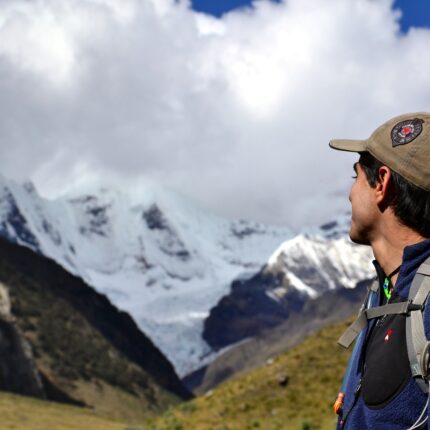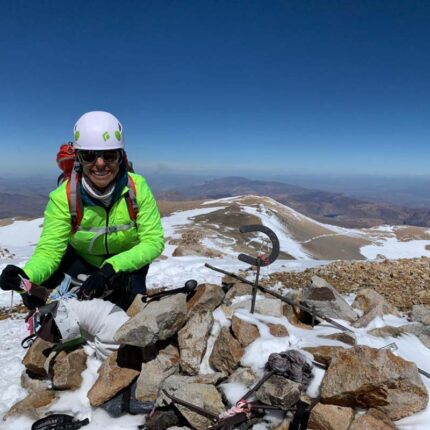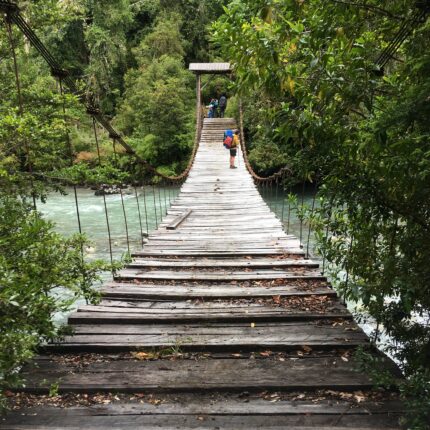A cultural journey that will guide you through the remote corners of Cusco. From the jungle to the highlands. From the lakes to the glaciers. From Incas to Aymaras. An unforgettable trip.
The Vilcanota mountain range is located in the Cusco region. A considerably long mountain chain, hundreds of kilometers in length, home to many well-known snow-capped mountains. The most sacred being the Ausangate (sitting at 6.384 masl.)
Vilcanota and its towering peaks are a frequent destination for trekking and andinism aficionados. On top of that, it is also a unique opportunity to get to know the real locals and their customs.
Within the Vilcanota mountain range, you will find another highlight: the Quelccaya Glacier, the largest in a tropical area. We can also admire the immensity of Lake Sibinacocha, an incredible greenish-blue body of water of glacial origins. Considered a tropical paradise, due to its spectacular landscape; surrounded by immense mountains and snow-capped mountains such as: Janapapunta, Apucuchu, Misti Chumpe and Qelca.
Our programs for the area are very diverse. Due to the proximity to Cusco and Archeological sites in Machu Picchu and Choquequirao, there are many options for hiking and cultural trips. “Discovering Cusco” is the most traditional, less challenging, spending more days in the area. “Deep Vilcanota” is a more demanding program, including high passes and ascents during the expedition days.
The option presented hereby includes some altitude adaptation days and then a series of accents. However, do not hesitate to ask for a taylor-made experience!
Entry requirements
A valid passport is needed for entering Peru. Passports must be valid for six months beyond the date the traveler will exit the country. US passports-holders can stay for up to 90 days without a visa.
We recommend that a photocopy of a passport should be made before international trips. Photocopies should be kept in a location other than the actual passport, for extra security. You should also leave a copy along with your emergency contact details.
Travel advisories
Check if there is any advice/warning issued as well as the entry requirements for your destination with your embassy.
Transfers in Perú
Transportation during the programme is, as stated before, by private bus services.
Arrival at the airport
When arriving in Lima, follow the signs to the arrivals terminal/building. Head to the immigration and passport control desk. You’ll be granted an entry permit in accordance with your visit. Make sure you check the expiration date so that it covers your full stay in Peru .
After picking up your luggage, you should head towards customs. If you have nothing to declare, you can simply proceed through the gate. If you have something to declare, be sure to provide your form to the customs officer so they can scan your luggage. Whether you do or do not have something to declare, bags may be randomly searched upon exit. Once through customs, look for your combination flight to Cusco.
Money
The official currency in Peru is the Sol. Check current exchange rates at www.xe.com before your trip. It is essential to bring cash for the trip. ATM machines are not always reliable or might have a low daily withdrawal limit. Usually, ATMs are easy to find both in Lima and Cusco, but they become increasingly scarce as we leave urban areas.
Most restaurants accept credit cards, but many do not.
Food in the mountains
All the meals served during the expedition are a mix of local and regional products. We are pleased to accommodate to your diet needs and/or allergies.
We recommend packing your snacks of choice for those long days in the mountains. The Same goes for your favorite beverages. Eating well is key for keeping your strength up out in the wild. And to cope with the loss of appetite, the best you can have is a wide variety of food at your disposal, from sweet to sour and salty.
Hotels
In Cusco, hotels offer all the amenities you might expect: room service, laundry, wi-fi, etc. Our hotel is close to main tourist attractions, unique stores and colorful markets. Plus, it offers a comfortable place to rest in-between activities.
Camping
During our treks and climbs we will be camping. You may find yourself waking up in your tent with a hot cup of tea delivered with a huge smile on our face, or playing cards with your new friends in the dining tent during tea-time or even enjoying an excellent meal, specially cooked by our staff.
Travel and rescue insurance
An insurance plan is mandatory to protect yourself from the unexpected. Check with your insurance company on the details about coverage and policies. Feel free to contact us for details or in doubt.
Location: Cusco, Perú
Duration: 12 days
Dates: May to July
Requirements: Ideal – Experience in trekking and camping. Good physical condition.
Guides and Ratio:
12 people max.
- Professional AAGM/UIMLA Mountain Guide
- Local guide in Machu Picchu and Choquequirao
- Accommodation in Cusco and transfers.
- Chef
- Passes to Machu Picchu, Choquequirao y permits from the communities.
- All meals as noted on the daily itinerary (see exceptions)
- Loads transportation in mules or horses
- Emergency-horse
- All shared gear for the expedition (sleeping tents, stoves and cooking gear, radio, etc).
- Private transfers from Cusco
- Satellite communication service
- Flights and accommodations in Lima, Perú.
- Transportation from Lima Airport
- Meals besides what is included on expedition days
- Personal gear (sleeping bag, layered clothing, boots, skis)
- Traveler insurance
- Tips
- Alcoholic Beverages
- Some unspecified item in this programme.
.





